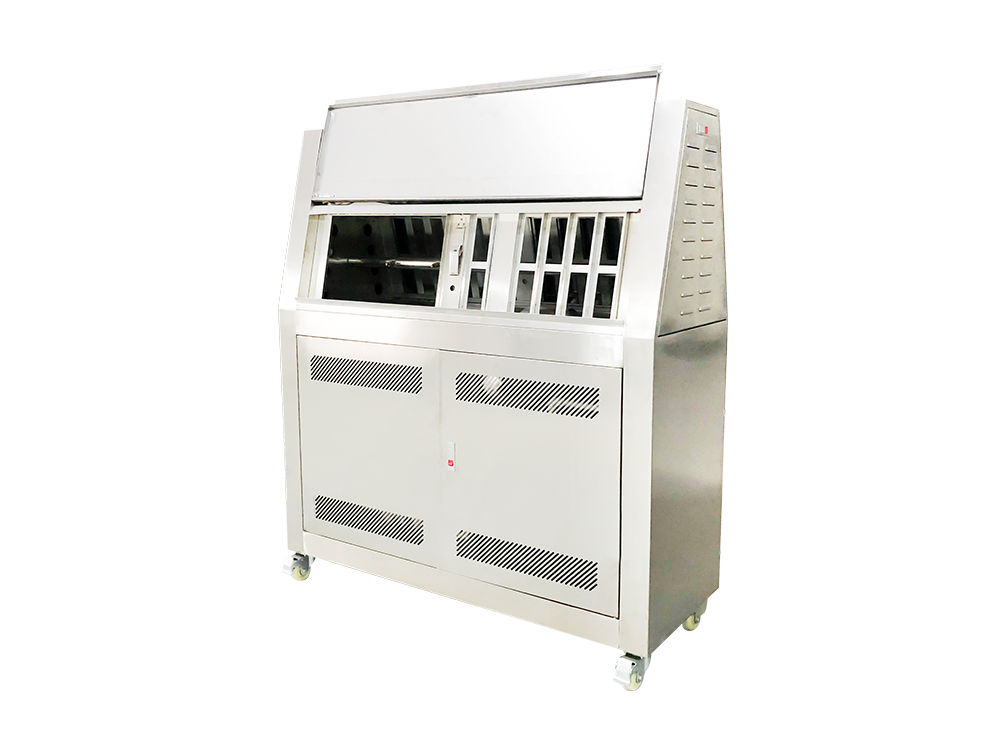Solar power systems depend on photovoltaic panels. The panels’ lifespan directly decides the systems’ performance and economic benefits. Testing PV panels is long-term. It is stable and reliable. It tests their materials, cells, construction, and performance. The goal is to assess their long-term stability and durability. Currently, we use two tests to test PV panel life. We use accelerated life testing and field life testing.
1. Why we’ve should test photovoltaic panels for aging.
1.1 Performance Assessment
You can test PV modules under long-term UV radiation. Do this by testing them under UV aging conditions. These performance indicators include:
Efficiency changed. It changed before and after testing.
Output power attenuation: changes in output power before and after the test.
Insulation performance is the material’s electrical performance. This is before and after the test.
1.2 Durability research
We can study the durability of PV modules under UV radiation. We do this through UV aging tests. Such studies help us understand. They also help us optimize how materials, structures, and assembly affect the life of PV modules. They also help us optimize how they affect the stability of PV modules.
1.3 Material Screening
We can compare different materials under UV aging. This can help us find materials that are better for PV modules. This helps to improve the performance and durability of PV modules.
2. PV Module Aging Test
2.1 Simulated aging method
The simulated aging method conducts aging tests. It tests PV modules in a lab. We usually use high temperature, humidity, UV radiation, humidity, and temperature cycling. They simulate the aging of PV modules after a long period of use. This method has a short test cycle and simple controls. But, it differs from actual use. And, the test results are for reference only.
2.2 Outdoor aging method
The outdoor aging method is to place the PV module in the outdoor aging test method. When testing, it is necessary to choose a suitable location, taking into account the influence of external environmental factors such as temperature, humidity, wind speed, and other factors on the test results, and it is also necessary to record the meteorological conditions. This method has a longer test cycle, suitable for simulating the long-term use environment of PV modules, and the test results are closer to the actual use of the situation.
2.3 Actual environment aging method
The actual environment aging method is the method of testing the actual PV module using the environment. The test results of this method are the most real and reliable, but it requires a long test cycle and a large amount of test data to conclude. At the same time, for existing PV power stations, the aging of PV modules can also be analyzed using power station operation data.
In conclusion, the PV module aging test is an important means to assess the performance and lifetime of PV modules. Different test methods have their advantages and disadvantages, and choosing the appropriate test method according to the actual situation can better evaluate the performance and life of PV modules.
3.PV Panel Accelerated Life Testing Process
3.1 Laboratory life test
The laboratory accelerated life test method is to use the environmental temperature, humidity, atmosphere, light intensity, and other factors to accelerate the aging test on the PV panel materials and devices, to simulate the effect of long-time use of PV panels in a short period. The specific operation process is as follows:
(1)The test specimen is mounted in test equipment that simulates light intensity, temperature and humidity conditions;
(2) Conduct aging tests on the samples by the predetermined test program and record the test data;
(3) According to the test data, analyze the life of the photovoltaic panel and determine the end-of-life point.
3.2 Field life test
The field accelerated life test method mainly utilizes natural environmental conditions for field testing, such as field testing of PV panels under different climatic, temperature and humidity, and light intensity conditions. The specific operation process is as follows:
(1) Select the test area and determine the test conditions, such as temperature, humidity, atmosphere, and light intensity;
(2) Perform field tests on the samples using the appropriate test equipment and record the test data;
(3) According to the test data, analyze the life of the PV panel and determine the end-of-life point.
4.Analysis and determination of PV panel life test results
The analysis and judgment of the PV panel life test results are mainly based on the test data. According to international standards, the life expectancy of PV panels is generally 25 years. If the design life of the PV panels can be reached or exceeded in the accelerated life test, i.e., the expected service life is achieved, the PV panels can be considered to be qualified. If the PV panels do not reach their design life, the manufacturer will need to further improve testing and design methods to improve the service life and performance of the PV panels.
5.Conclusion
PV panel life testing is an important method for assessing the long-term performance and reliability of PV panels. Properly conducted PV panel life tests are important to ensure the normal operation of solar power systems and to improve the economic benefits of solar power systems.
For more environmental test chamber, Please visit: https://chiuventionclimatechamber.com
For more environmental test simulation programmes,environmental testing knowledge, instrument knowledge, and environmental testing laboratory knowledge, please contact us: [email protected]


